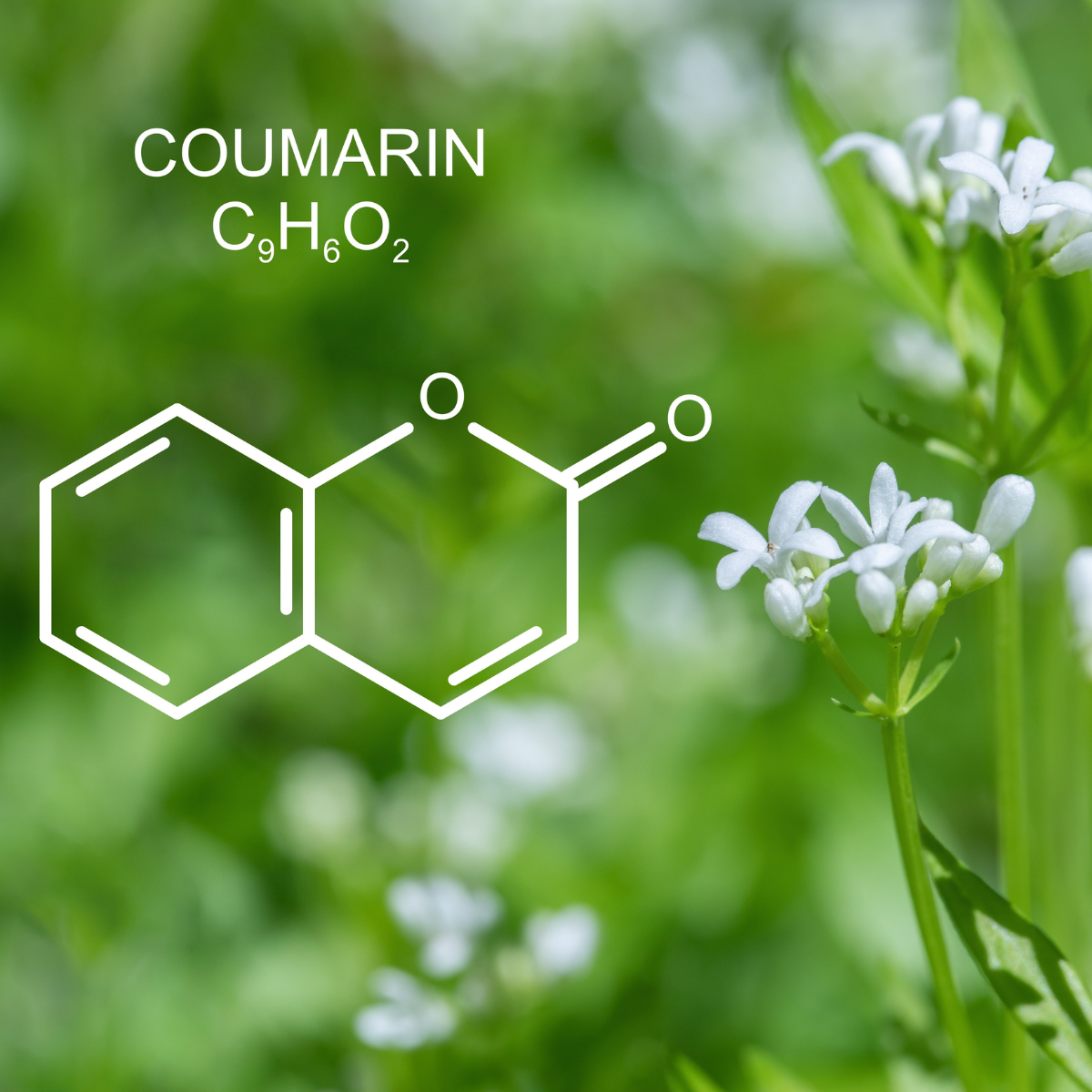Coumarin is a naturally occurring aromatic chemical from the group of benzopyrones with a pleasant spicy, sweet, hay-like note. The name derives from the Tupian languages spoken in Brazil and Guyana. The word “Cumarù” means “Tonka bean tree”. The Tonka bean contains a large amount of natural coumarin. It is found in many plants, where it may serve as a chemical defense against predators. Although coumarin has a pleasant, sweet odour, animals tend to avoid it since it has a bitter taste.
Synthetic coumarin, a colourless crystalline solid, is produced from salicylaldehyde and acetic anhydride (Perkin’s synthesis). Starting raw material to produce salicylaldehyde is phenol. By the addition of Formaldehyde to phenol under controlled, catalytic conditions it is possible to obtain ortho-Hydroxymethylphenol which can be then oxidised to salicylaldehyde.
Coumarin is mainly used as a fragrance in perfumery. In the EU according to Regulation (EC) 1334/2008 coumarin cannot be used as flavour. Ingested in large quantities causes severe headaches, vomiting, dizziness, and drowsiness. If coumarin occurs naturally in flavourings or food ingredients with flavouring properties, certain maximum levels in the food must not be exceeded. Maximum amounts are between 5 mg/kg for dessert and 50mg/kg for traditional and/or seasonal bakery products containing a reference to cinnamon in the labeling.
Due to the rising cost of raw materials, coumarin prices have reached unprecedented levels in the first half of 2022, up to 13.5 USD/kg just before the Chinese New Year. Afterward, the price has only slightly softened to around 12.5-12.8 USD/kg for 1 FCL.
Interested?
Our experts are at your disposal to help to choose the right product
